In the Bible, trumpets blare out calls to war and issue urgent wake-up calls. Another trumpet-like instrument, the Shofar (ram’s horn) stridently signals the need for repentance on the Day of Atonement (Lev 25:9; Joel 2:1).
Those were practical instruments whose purpose was to make harsh sounds, not necessarily music. However, you can find many ancient versions of musical instruments in the Bible’s pages, all of which, are still in use in some form today:
- Flutes (Dan 3:5, 1 Sam 10:5)
- Tambourines (Ex 15:20, Ps 150:4)
- Sistrums (various types of rattles, Ps 150:5)
- Cymbals (2 Sam 6:5, Ps 150:5)
- Bells (Ex 28:33-34; 39:25-26); and
- Lutes (Ps 108:2; 150:3)
But none of these are the oldest musical instruments recorded in scripture. That pride of place belongs to the wonderful and elegant harp, easily the queen of musical instruments!
The Inventor
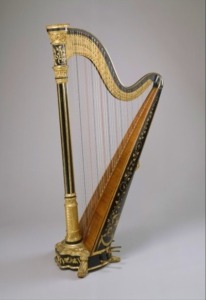 It seems that music entered human society very early after the creation of Adam and Eve. The Book of Genesis tells us that Jubal, the harp’s inventor, came seven generations after Adam and Eve, through the line of Cain.
It seems that music entered human society very early after the creation of Adam and Eve. The Book of Genesis tells us that Jubal, the harp’s inventor, came seven generations after Adam and Eve, through the line of Cain.
Unfortunately, Jubal’s older brother was a guy named Jabal, and although the Bible doesn’t mention it, we have it on good authority that their mother was forever mixing up their names. Well, that’s a dilemma! Here’s the passage:
Adah gave birth to Jabal; he was the father of those who live in tents and raise livestock. His brother’s name was Jubal; he was the father of all who play stringed instruments and pipes. (4:20-21)
Adah finally figured out that if she remembered the “A” in Jabal meant “Animals” and the “U” in Jubal meant “mUsic”, she could keep the boys straight.
Sadly, nowadays no one credits Adah for being the mother of mnemonics. So, moving on…
An Instrument of Men and Angels
The harp (sometimes called the lyre) is mentioned at least 30 times in the Bible in 9 different books. It is one of those rare biblical realities that appears in both the first and last books of the Bible and in numerous places throughout.
The music of the harp, as anyone who has heard it knows, has many effects on the human emotions, as well as some unique spiritual symbolism. Here are a few of those effects:
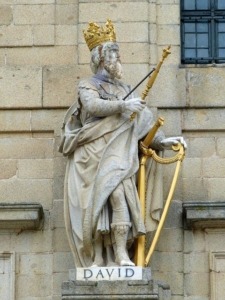 CALMING: In the Old Testament the harp is most directly associated with King David, who, among his many talents, was a skilled harpist. In the First Book of Samuel, David played the lyre to calm the fears and murderous rages of King Saul (1 Sam 16:14-23).
CALMING: In the Old Testament the harp is most directly associated with King David, who, among his many talents, was a skilled harpist. In the First Book of Samuel, David played the lyre to calm the fears and murderous rages of King Saul (1 Sam 16:14-23).
Even the harp music didn’t ultimately prevent Saul from trying to pin David to a wall with a spear (1 Sam 19:10-12), but David’s intentions were good.
JOY AND PRAYER: In the First Book of Chronicles, David, as king, assigned musicians to play harps and other instruments when he brought the Ark of the Covenant to Jerusalem (1 Chron 15), commanding them to play with joy! The psalms, of course, are full of references to harps and lyres.
MOURNING: The absence of harp music was a drastic sign of mourning. It is said that, when the Israelites went into the Babylonian Exile, they “hung up their harps” on the poplar trees because they could not sing for joy in a foreign land (Ps 137:2).
GLORY: In the Book of Revelation we find out that harps are even associated with angels (5:8-9), who, with the 24 elders, seem to play harps and offer bowls full of incense to God’s glory.
I don’t think Heavenly music will be like some Renaissance artists have depicted it, but who knows? In Fra Angelico’s depiction of “Christ Enthroned in Glory” we can barely make out two angels on the left who snuck their harps into the gathering!
And don’t forget the famous Ghent Altarpiece by Jan Van Eyck featured angels playing musical instruments to, um, beat the band (notice the harp just above the pipes):
Harp Styles
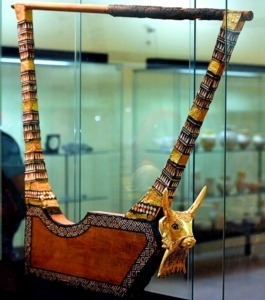 The harp has taken many forms over the ages, but one simple structural fact remains: it is always some kind of framework fitted with strings, generally vertical but sometimes horizontal (as in modern day lap harps and related instruments like steel guitars).
The harp has taken many forms over the ages, but one simple structural fact remains: it is always some kind of framework fitted with strings, generally vertical but sometimes horizontal (as in modern day lap harps and related instruments like steel guitars).
This ancient Babylonian lyre (at right) is believed to be 2500 years old, followed by images of Chinese (ca. 8th century AD), African (unknown date), and Medieval German (13th century) harps. Below those, the humble zither, sometimes called the lap harp or dulcimer, is kind of a country cousin to the real harps, but who am I to judge?
Dressed in Modern Garb
In its modern garb, the harp is an inexhaustible source of musical wonder and virtuosity. In many of the clips you’ll see below, the musicians play their harps in a standing position, which gives them an incredible ability to improvise and use the instrument to its fullest extent.
 Even with only a passing familiarity with these beautiful instruments, we know that harps can imitate many sounds of nature (wind and water, for example) as well as birds and other animals. In one of the videos below, you’ll hear a harpist using his instrument to imitate the sound of a donkey braying. It’s amazing!
Even with only a passing familiarity with these beautiful instruments, we know that harps can imitate many sounds of nature (wind and water, for example) as well as birds and other animals. In one of the videos below, you’ll hear a harpist using his instrument to imitate the sound of a donkey braying. It’s amazing!
As for the skill level needed to play it, well, you can gauge that from the examples below. If you have a few moments to watch them, it will be time well-spent, and you will see some astonishing feats of musical talent.
In selecting these pieces, I have deliberately skipped over the many wonderful performances of the concert harp with the view of featuring shorter clips of modern harpists playing popularly for the simple enjoyment of their audiences.
In any case, the performers themselves seem to relish every minute of their performances as they play the oldest biblical instrument in modern garb.
Here’s our lineup:
Perfectly Joyous Harp Music (1:53)
Mariachi Band with Harp (1:27)
Paraguayan Harp Sounding Like a Tweeting Bird (4:13)
Harp Sounding Like a Donkey! (2:20, especially 0:35 and 1:35)
———-
Photo Credits: Via Wikimedia: 2500 Year Old Harp (FRCP); Concert Harp (Metropolitan Museum of Art); Chinese harp (Ws227); African harp (Ann Porteus); Medieval harp (Ingersoll); Angels with Christ Child (Marianne Stokes); Fra Angelico (National Gallery); Details of the altarpiece courtesy of “Closer to Van Eyck: Rediscovering the Ghent Altarpiece”; via Pixabay: King David (falco) and harpist with hat (Victor Milan).
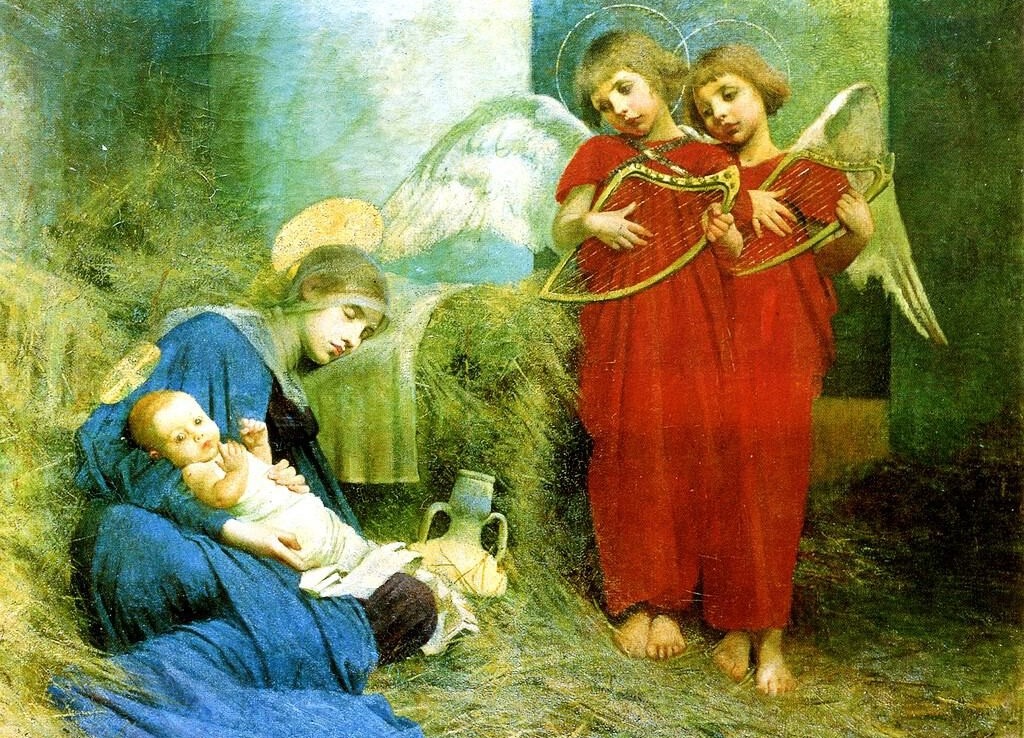
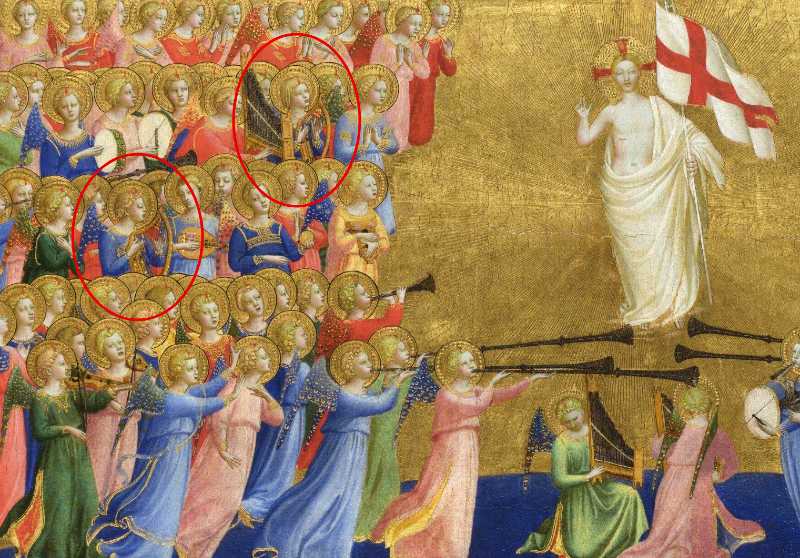
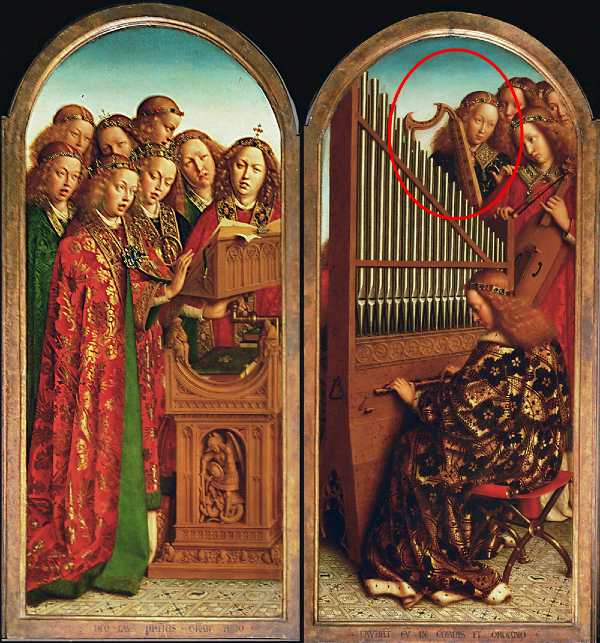
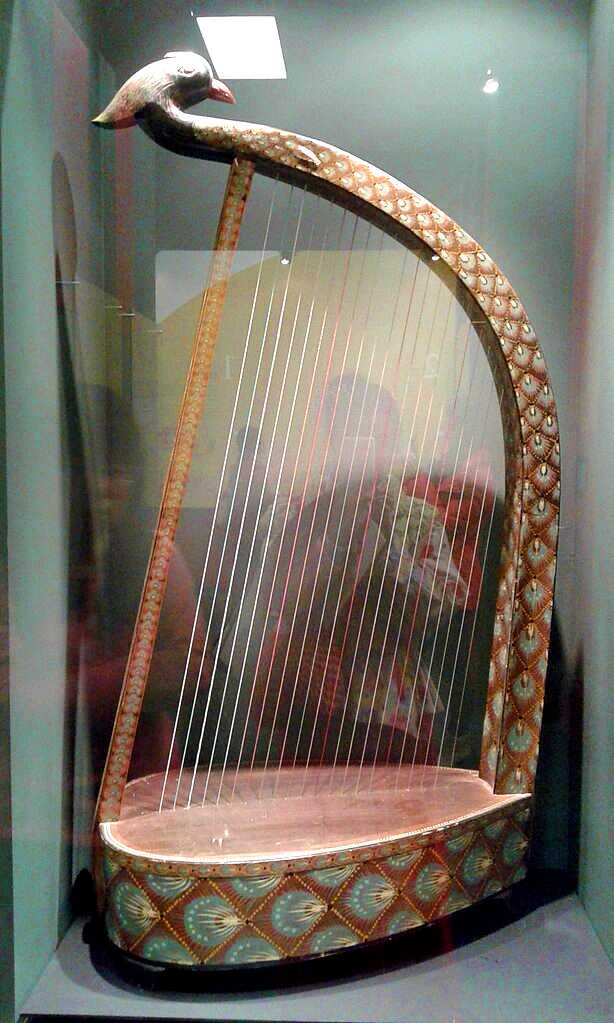
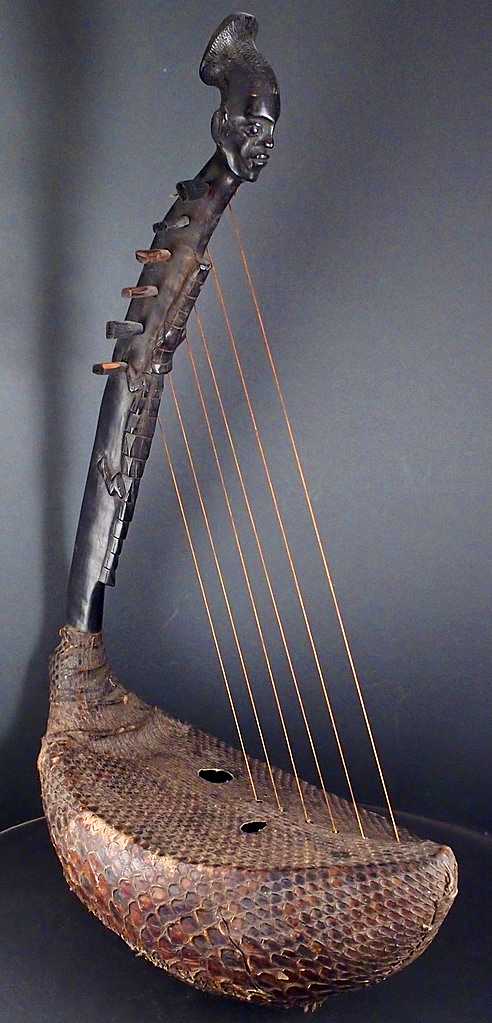

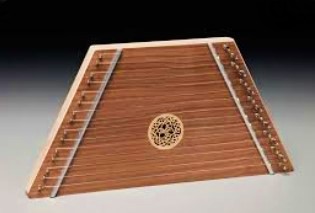

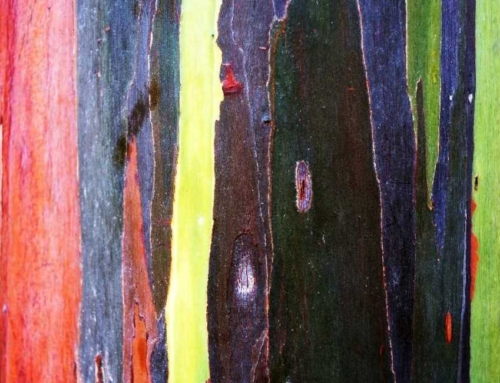
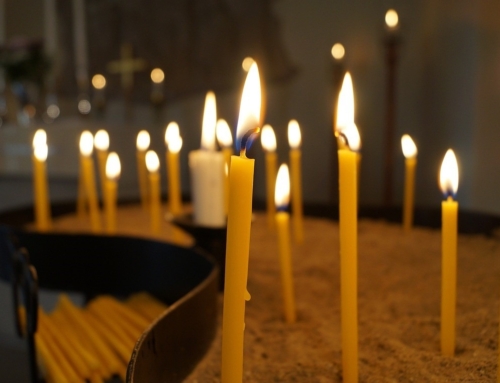
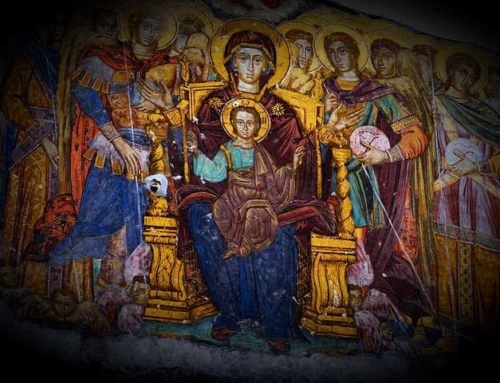
Leave A Comment